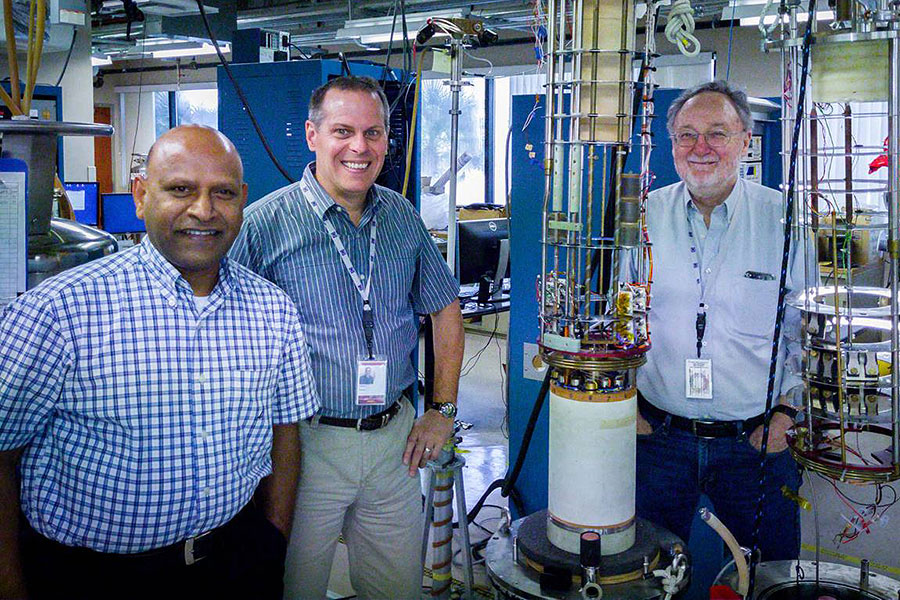
Invented almost 200 years ago, electric motors are a mainstay of our modern world, powering everything from personal gadgets to massive machinery.
Now, a team from the Center for Advanced Power Systems and the FSU-headquartered National High Magnetic Field Laboratory is hoping to take a big bite out of that power bill.
With a $1 million grant from the Department of Energy (DOE) and the help of industry partners, researchers will study ways to make industrial motors more efficient and reliable — improvements that could significantly reduce energy use, save billions of dollars and contribute to a cleaner environment.
“Even a small improvement in the efficiency would yield huge benefits in terms of cost savings and lower environmental impact,” said Sastry Pamidi, associate professor of electrical and computer engineering at the FAMU-FSU College of Engineering and a lead researcher at CAPS.
The three-year project is one of 13 funded by the DOE’s Office of Energy Efficiency & Renewable Energy, each aimed at advancing technologies for energy-efficient electric motors. In this project, CAPS and the MagLab are partnering with Advanced Conductor Technologies of Boulder, Colo., and SuperPower Inc. of Schenectady, N.Y., to develop better superconducting wires.
The partnerships behind this team — CAPS and the MagLab at Florida State University, SuperPower and ACT in industry — are part of what make the project so promising, said Florida State Vice President for Research Gary K. Ostrander.
“Bringing together industry and academia, engineering and physics, and CAPS and the MagLab — this grant is an excellent example of science synergy,” Ostrander said.
These superconducting wires will feature advanced superconducting materials that, unlike copper, carry electricity with perfect efficiency. In fact, the project will develop cutting-edge, high-temperature superconductors that are more practical and cheaper to operate than traditional low-temperature superconductors, such as those commonly used in hospital MRI machines.
Industrial motors — which use magnets and electricity to generate motion — are no trivial matter, said Pamidi. In factories across the United States, they consume more than 10 percent of the nation’s electricity, according to statistics from the U.S. Environmental Protection Agency. In 2016 alone, industry spent more than $63 billion on electricity, according to the DOE.
Smarter cables would benefit other areas, including power transmission, motors and generators (including wind generators and other clean energy), propulsion for ships and airplanes, research magnets like those used at the MagLab and particle accelerators at CERN, which rely on hundreds of superconducting magnets.
The driving idea behind the group’s project is to build wires using a kind of high-temperature superconductor known as REBCO (rare-earth barium copper oxide). REBCO is engineered into tapes by SuperPower for use in cutting-edge devices such as the MagLab’s 32 tesla all superconducting magnet. However, it is very difficult to create long lengths of this tape without occasional defects — flaws that stop electricity in its tracks. As a result, a lot of the REBCO tape manufactured doesn’t meet the exacting standards for that application, which raises production costs.
“High temperature superconducting materials are expensive, very tricky to fabricate and often hard to evaluate and understand,” said David Larbalestier, director of the Applied Superconducting Center at the MagLab, who is partnering with Pamidi on the research along with ASC scientist and FAMU-FSU Professor of Mechanical Engineering Lance Cooley. “We have spent decades studying these materials and their properties and developing the best way to shape them into usable devices.”
The team plans to develop superconducting cables that will be more tolerant of imperfections: If electricity encounters a roadblock in the filament, it will simply jump to an adjacent one and continue its journey.
“It’s called current sharing,” Pamidi said. “If there’s a defect in one filament, current can go around it to other filaments.”
Offering multiple pathways to the electricity improves the cable’s reliability, too.
The concept isn’t new to electrical engineering: Household wire is made up of multiple filaments of copper. But applying the idea to cutting-edge high-temperature superconductors is novel.
“Nobody uses these yet for motors and generators,” Pamidi said. “The technology is not ready for wide use in industrial motors, but these projects would make it closer to commercialization.”



